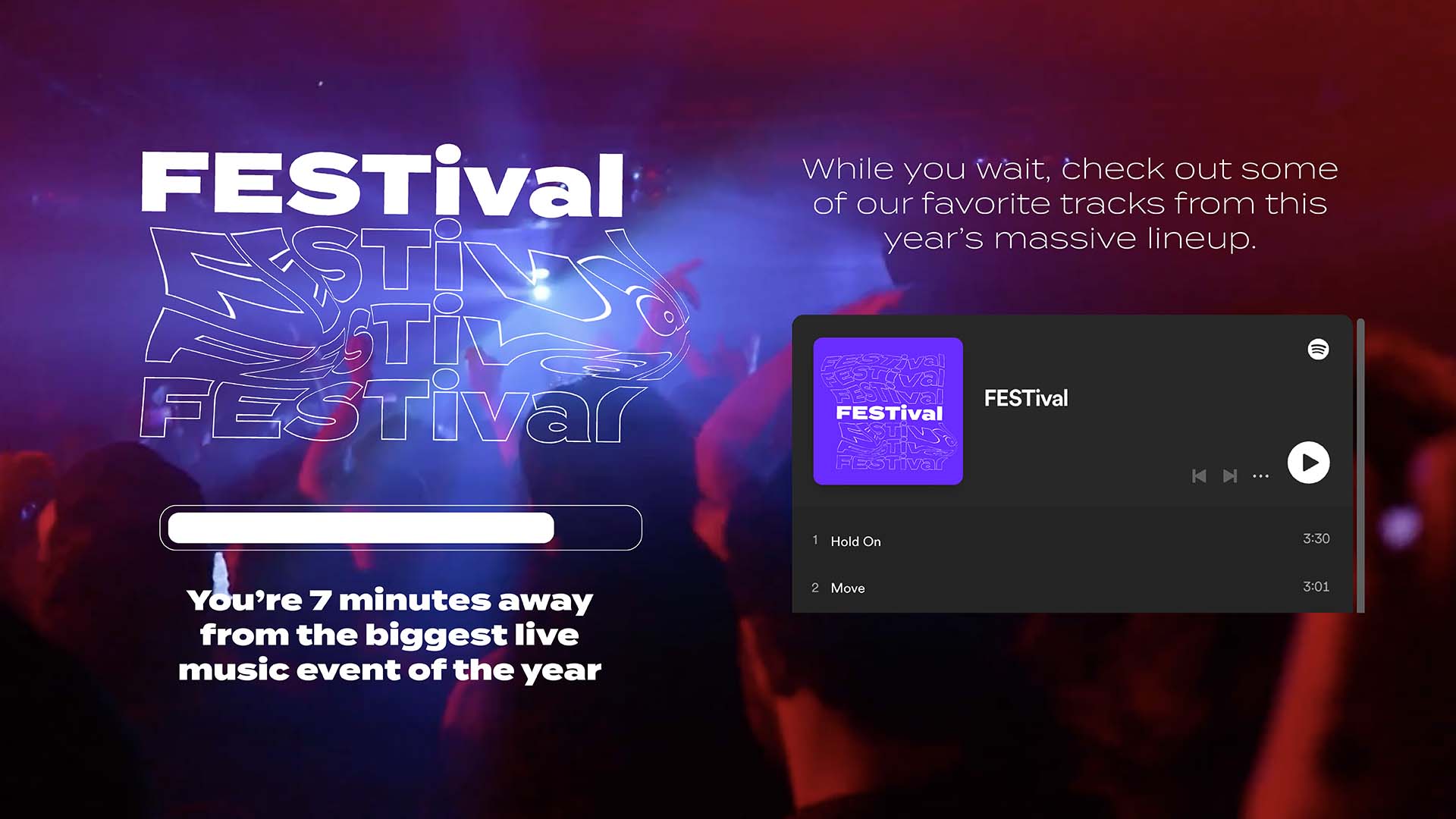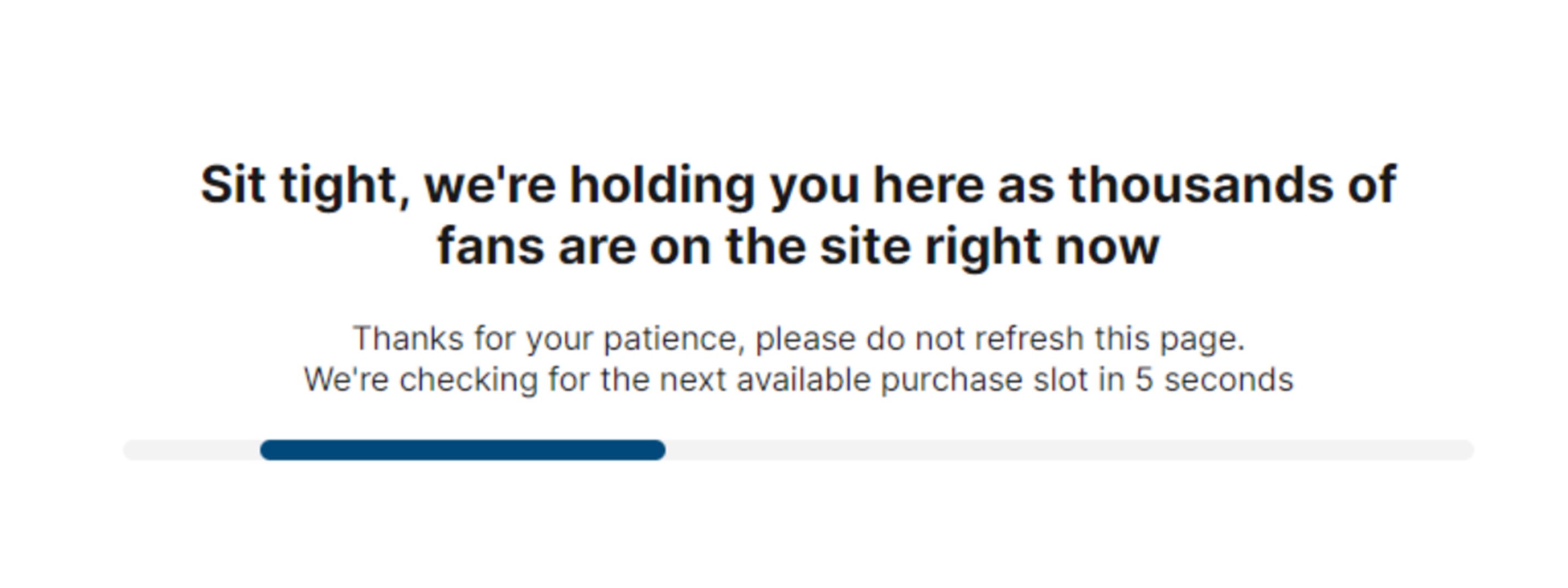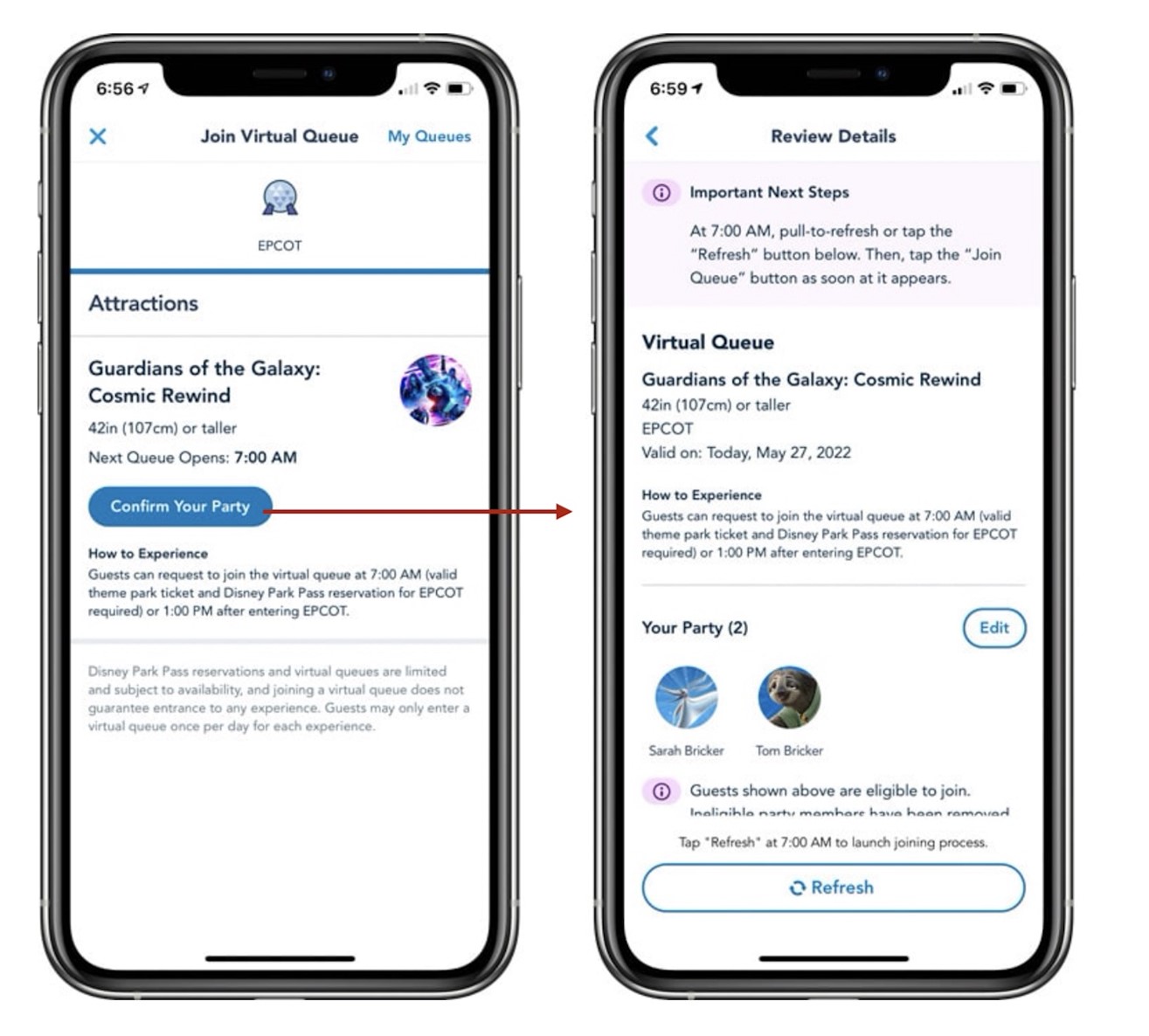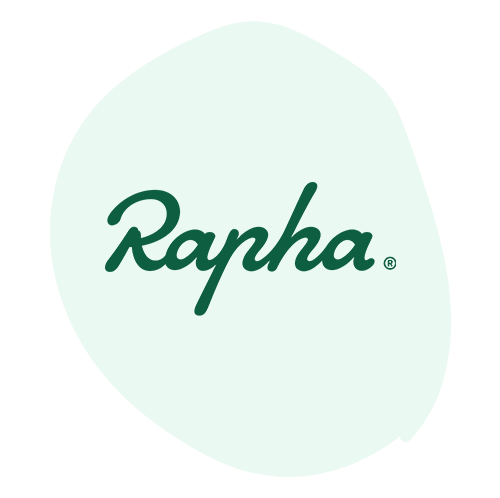The happiest queues on earth: 6 lessons in queue psychology from Disney Parks

Queues are a fair and essential way to deal with the flow of customers. But not all queues are created equal. In this article, you’ll learn how Disney created the happiest queues on earth, and how you can apply Disney Parks' tips and tricks to your own queues—both on and offline.
The first Disneyland opened in 1955 in Anaheim, California. In the 70-odd years since, it’s become the most-visited theme park in the world, opened 5 new international locations, and generated hundreds of billions of dollars in revenue.
What sets Disney’s theme parks apart?
The “Imagineering” department. Originally made up of Disney’s animation experts, the Imagineers are the ultimate customer experience experts.
From the moment you step into a Disney Park, everything you see, hear, and feel, is carefully considered and curated by the Imagineers. They dream up and design everything from the rides to the architecture to the food to the shows—even the queues.
Thanks to the Imagineers, Disney Parks may just have the happiest queues on earth. In their tireless efforts to improve the experience of queuing, the Imagineers essentially invented the field of queue psychology, says Professor Richard Larson (also known as Dr. Queue), the world’s preeminent expert in queuing.
Discover the 6 ways Disney creates queues their guests love, how you can use these strategies to improve your queuing experience, and the lessons Disney can teach you on optimizing virtual waiting rooms and the art of online queuing.
“Mickey’s Ten Commandments” are the set of rules that guide everything Disney’s Imagineers do. The first two commandments are simple: “know your audience” and “wear your guests’ shoes”.
In the spirit of these commandments, the early Imagineers headed into Disneyland every two weeks to experience the park first-hand.
It was this practice that first got the Imagineers interested in improving their queues. Standing alongside guests, the Imagineers heard their frustrations, boredoms, and anxieties—and knew they needed to do something about it.
The Disney lesson: Don’t let the process of creating new things distract you from optimizing the existing customer experience. Put yourself in your customer’s shoes. Use your website or products as you’d expect them to. Listen to them and their concerns. And don’t accept any level of dissatisfaction—regardless of how necessary it might appear.
RELATED: Improve Your Ecommerce Customer Experience with These 9 CX Strategies
At present-day Disney Parks, the queues are much more than just queues. They’re fully-fledged interactive experiences that just happen to control the flow of guests to rides.
This is perhaps the most important change the early Imagineers made to Disneyland’s queues: they expanded their notion of the customer experience by making the queues a part of the rides.
To ride on the Avatar Flight of Passage, for example, you first must enter into the Avatar world of Pandora.
The queue begins in a jungle, which you pass through to reach large caves with ancient rock carvings on the wall. These caves flow to a laboratory bunker filled with strange creatures, immersive sound effects, and sleeping avatars. You pass through the lab to the briefing room, where costumed staff inform you of your mission. Your body is scanned and decontaminated. You’re given safety equipment.
The Disneyland queues are more like a warm-up act for the main show. They’re designed to get people in the mood. To immerse them in the world and build their excitement and anticipation for the ride.
This strategy is rooted in research on anticipation psychology, which has shown that building positive anticipation can create:
- A greater sense of wellbeing and excitement while customers wait
- A higher likelihood of enjoyment when customers get access
- Stronger, more positive memories after they’ve experienced it
The Disney lesson: Use waiting as an opportunity to build excitement and anticipation, to give context, to get customers ready. If you’re using a virtual waiting room, avoid standard queue pages. Instead, brand the experience, give customers opportunities to engage. View your waiting room—and entire website experience—as an extension of the product you’re selling. Make every element of the customer experience one that delights.
RELATED: The Power of Anticipation Psychology & How to Use it For Ecommerce Marketing
A simple way many Queue-it customers achieve this is by embedding music playlists on their waiting room page. This lets fans listen to and get excited for the artists they’re planning to see as they wait. The same can be achieved with short product or event trailers, photo galleries, or games.

Immersive queues like the one described above don’t just get people excited for the ride, they also distract them from the fact that they’re waiting at all.
One of the core tenets of queue psychology is that unoccupied time feels longer than occupied time. If you have something to do while you wait, you don’t feel like you’re waiting. And if you don’t feel like you’re waiting, the wait passes quicker.
RELATED: The Psychology of Queueing Revealed in 6 Simple Rules
Keeping people occupied and entertained is Disney’s specialty, so it should be no surprise they’re the experts in distracting people from the fact that they’re waiting in line.
Disney has even gone as far as designing exclusive interactive games that can only be found in certain queues at their theme parks, including:
- A themed soft play area within a circus tent before their Dumbo ride
- The chance to create magical projections on the ceiling whilst waiting for the Seven Dwarfs Mine Train
- A hands-on supernatural experience that sets the mood as you wait to enter the Haunted Mansion
- A tour through the operations of an 1860’s mining company ahead of the Big Thunder Mountain Railroad ride, with the ability to set off dynamite around the ride itself
The Disney lesson: If you really want to make time fly for those queuing on or offline, give them something to distract themselves with. Add games, videos, quizzes to your online queue. Put a TV or magazines in your physical waiting room or store. Direct them to a page or pamphlet that lets them better prepare themselves for the experience to come. Do something to make the wait feel special, worthwhile, and rewarding.
Tate Modern applied this lesson to their waiting room for tickets. They added a link to their shop website along with an exclusive discount code. Customers could distract themselves by browsing the prints, books, and art available on the shop. Plus, they got a unique benefit they never would’ve got without waiting.
This strategy distracts customers from the fact that they’re waiting, rewards them for waiting with a discount, and drives additional revenue—all while keeping them in the Tate ecosystem.
“We put a banner on the waiting room page that links you through to the shop website with the promo code … The uptake on that is really good and that's great for a customer because it's a little added bonus that they weren't expecting. That's great for us because it drives more revenue as well.”
JON HAWORTH, SR. COMMERCIAL SYSTEMS MANAGER


Any savvy Disney theme park visitor knows the official Disney Park apps are an essential tool for planning your day and getting on as many rides as possible.
Guests can use Disney's apps to see the wait times for each attraction and how long it takes to walk to them. This lets guests sets expectations and plan their days with peace of mind. It ensures guests don’t walk to the other end of the park only to be surprised and frustrated by a massive queue.
The informed wait lets guests plan their time. It means no nasty surprises. It’s an essential tool in the smooth running of Disney’s queue strategy.
In true Disney fashion, though, the queues at Disney Parks don’t just set expectations, they exceed them. You see, Disney’s estimated wait times are almost always slightly longer than the waits actually are. They under-promise, then over-deliver.
This way, customers set their expectations for, say, a 20-minute wait, then are delighted when the queue only takes 15 minutes. They feel like they’ve won back time. They end their queue experience on a carefully curated high.
This tactic leverages a cognitive bias called the peak-end rule, which describes how people tend to evaluate and remember experiences based on how they end. By exceeding expectations and making guests end their queue on a high, Disney increases the likelihood they'll remember the whole queueing experience fondly—regardless of how they felt throughout it.
The Disney lesson: Give your customers peace of mind with transparency and an estimated wait time. Let them plan their time with confidence and avoid frustrating surprises. Set expectations, then exceed them. Avoid virtual waiting rooms that don’t provide a progress bar or information on estimated wait time and the number of people in queue.
RELATED: The Comprehensive Guide to Virtual Waiting Rooms: All Your Questions Answered

Avoid waiting rooms that simply tells customers to sit by and be patient—this just creates stress and uncertainty for customers.
Another key feature of Disney’s apps is the ability to queue entirely virtually for certain rides.
When a Disneyland virtual queue is in place, you can request to enjoy the attraction later in the day by joining the queue digitally, so you can explore other experiences while you wait.

With their virtual queues, Disney takes occupying time while queuing to another level. Guests can queue from the comfort of their phones while on a roller coaster, at a Disney restaurant, or while waiting in another queue—for popcorn, photo opportunities, or even other rides.
The Disney lesson: Don’t take up your customer’s precious time if you don’t need to. If you have a physical store that attracts queues, let customers book a slot. If you’re queuing customers online with a virtual waiting room, ensure the solution has features that enable them to queue while doing other activities.
This lesson of making queuing more flexible is incorporated into Queue-it's virtual waiting room with the email notification and queue transfer features. These features allow customers to enter their email to get notified when it’s their turn to access the site and/or transfer their queue position to a mobile device if they want to queue on the go.
“Thanks to the email notification feature, I didn’t have to sit still in front of the screen the whole time. I got notified when my turn was coming up next.”
HIROAKI HASEGAWA, DIRECTOR OF SYSTEM DEVELOPMENT DEPARTMENT, CN Playguide
For premium customers, Disney offers Lightning Lanes—a fast pass customers can purchase to skip the queue.
These Lighting Lanes are like priority boarding on airplanes for business class customers. They let Disney reward guests who’ve paid for their premium Genie+ services.
This drives more revenue for Disney and creates a better experience for customers willing to pay for the premium Disney Parks experience.
The Disney lesson: Turn obstacles into opportunities. View every element of the customer experience as a chance to nurture loyalty and drive sales. If you must queue visitors, it’s because your products are in high demand. If your products constantly sell out, it’s because they’re popular. Far from being problems, these represent opportunities to upsell customers on a premium experience.
Queue-it customers apply this lesson to online queuing with the Invite-only waiting room, which lets them control sales access to reward loyal customers, block bots and resellers, and incentivize loyalty program sign-ups. With an Invite-only waiting room, you can create your own Lighting Lane, and offer it up exclusively to loyalty program members or VIP customers. You can turn customer demand into customer data. Long lines into loyal customers.
“Running the sale with Queue-it in place made sure we achieved our goal of delivering an enhanced experience for our loyal members. We gave them the priority access we had promised them as a cornerstone membership benefit.”
TRISTAN WATSON, ENGINEERING MANAGER

The queues at Disney Parks prove that not all queues are created equal. They prove that even the most dull, ordinary experience can be elevated with the right tactics and tools.
What applies to Disney’s physical queues applies to online queues, too. If you’re using a virtual waiting room, take notes from Disney. Put yourself in your customer’s shoes and ensure your virtual waiting room:
- Is on-brand and builds anticipation and excitement
- Keeps customers distracted and occupied while they wait
- Sets expectations with an estimated wait time and progress bar
- Gives customers the freedom to queue across devices or be notified when it’s their turn
- Incentivizes upselling and loyalty program sign-ups by offering exclusive access